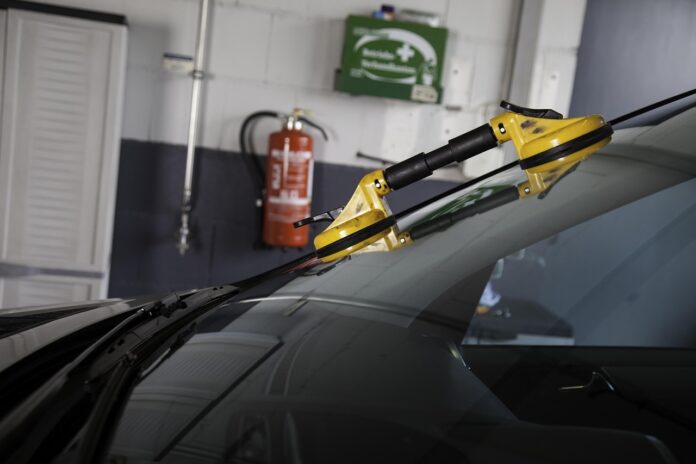
Image Source: https://pixabay.com/photos/glass-car-glass-broken-glass-car-1749697/
While many drivers underestimate the importance of auto glass, it remains a critical component in ensuring safety and maintaining the structural integrity of modern vehicles. However, in recent seasons, the repair industry has faced mounting pressure as supply chain bottlenecks continue to slow service delivery.
According to a survey of 500 independent U.S. shops, all respondents noted that repairs now take longer than before the pandemic. Most shops reported modest delays, but 15 percent said the wait has grown significantly, resulting in an average turnaround extension of about one and a half days.
In this blog, we will get into the factors driving the windshield supply shortage, explore how fragile cargo like auto glass exposes weaknesses in global logistics, and examine what this means for pricing and availability in North America.
Why Shipping Auto Glass Is More Complicated Than It Looks
Compared to other automotive parts such as steel panels and plastic bumpers, transporting auto glass is significantly more challenging. Glass cannot be stacked or compressed to save space, and even with protective packaging, the risk of breakage during handling or transit is high. These limitations make shipping less efficient and more costly.
Another factor complicating distribution is the distinction between OEM vs aftermarket auto glass. OEM pieces, which follow exact specifications, tend to move through well-structured channels with predictable lead times.
Aftermarket glass, however, often depends on smaller or less consistent distribution networks. When supply chains are under pressure, it is typically the aftermarket segment that experiences shortages first, leaving repair shops and insurers facing unexpected delays.
The Auto Glass Supply Shock Chain Reaction
The auto glass industry is a clear example of how stress in one part of the supply chain spreads throughout the system. What starts with a spike in freight rates or a delay at a port can quickly leave repair shops waiting on backorders and drivers paying more for basic services. Some ways this chain reaction is experienced include:
1. Rising Shipping Rates
When global freight costs climb, the impact does not stop at the shipping company. Higher container rates are passed along to distributors, who then adjust their pricing to cover the added expense.
Repair shops ultimately inherit these costs when ordering replacement glass, leaving them with thinner margins or forcing them to charge customers more. A single increase in freight costs can therefore ripple across the entire chain, turning a logistics issue into a local business problem.
2. Delays and Lead Times
When ports are congested, vessel schedules change, or container space is limited, the movement of auto glass slows considerably. Deliveries that once took only a few days may now stretch into weeks, particularly for specialized windshields or less common models.
These delays leave repair shops with growing backorders and customers waiting longer for service. Insurance claims are also affected, since repairs cannot be completed until the correct glass is available, adding another layer of frustration for businesses and drivers alike.
3. Price Pressures for Consumers
When supply chains falter, the effects on auto glass pricing are clear. Higher costs for materials, shipping, and distribution accumulate by the time the product reaches repair shops. This means a windshield replacement can cost far more than expected, leaving many drivers hesitant to schedule repairs.
Delays in fixing damaged glass not only compromise vehicle safety but also illustrate how global disruptions show up in everyday life.
Managing Auto Glass Supply Under Pressure
As supply chain disruptions continue to affect the auto glass shipment and market, the need for effective management strategies has become clear. Repair shops struggle with unpredictable deliveries, manufacturers are under pressure to secure production capacity, and logistics providers must find safer ways to handle fragile cargo.
Each group requires a different approach, but together these efforts can ease shortages and stabilize the flow of glass to the market.
- Repair Shops: Shops on the front lines of service often feel the strain first. To manage auto glass repair amid supply delays, many have turned to stockpiling high-demand parts or building relationships with multiple suppliers. These steps help them maintain service levels even when supply chains are unpredictable.
- Manufacturers / OEMs: For manufacturers, the current environment highlights the risks of long, complex supply chains. By nearshoring production to North America, OEMs can cut shipping distances and lessen exposure to port disruptions. Vertical integration also provides greater stability, since it allows companies to oversee everything from material sourcing to final delivery. Together, these measures help reduce delays and protect supply when global shipping lanes are under strain.
- Logistics Providers: For carriers and freight operators, the ability to handle fragile cargo has become a point of differentiation in a crowded market. Reinforced packaging, dedicated racks, and well-trained staff reduce the risk of damage and keep shipments on schedule. Some companies are also turning to digital tools such as route optimization and AI navigation in shipping to avoid congestion and minimize transit times. This mix of specialized handling and technology not only protects inventory but also strengthens relationships with manufacturers and repair networks.
Comparative Lessons from Other Fragile Cargo
The auto glass market is not the only sector that tests the limits of fragile cargo logistics. Solar panels, ceramic tiles, and electronics also require careful handling because they are prone to damage and delays when supply chains are disrupted.
Other sectors have responded to the challenge of fragile cargo by using protective containers, real-time tracking, and tightly managed shipping networks. Applying these same approaches to auto glass can help reduce breakage and ensure more reliable deliveries, which will be increasingly important as the movement of delicate products grows worldwide.
Conclusion
The strain on the auto glass market shows how fragile cargo can reveal weak points across global supply chains. Higher freight rates, congested ports, and limited container space are not one-off problems but recurring pressures that affect many delicate goods.
For logistics professionals, understanding how different industries respond to these challenges offers a path to improving their own practices and ensuring that sensitive cargo moves with greater reliability.





